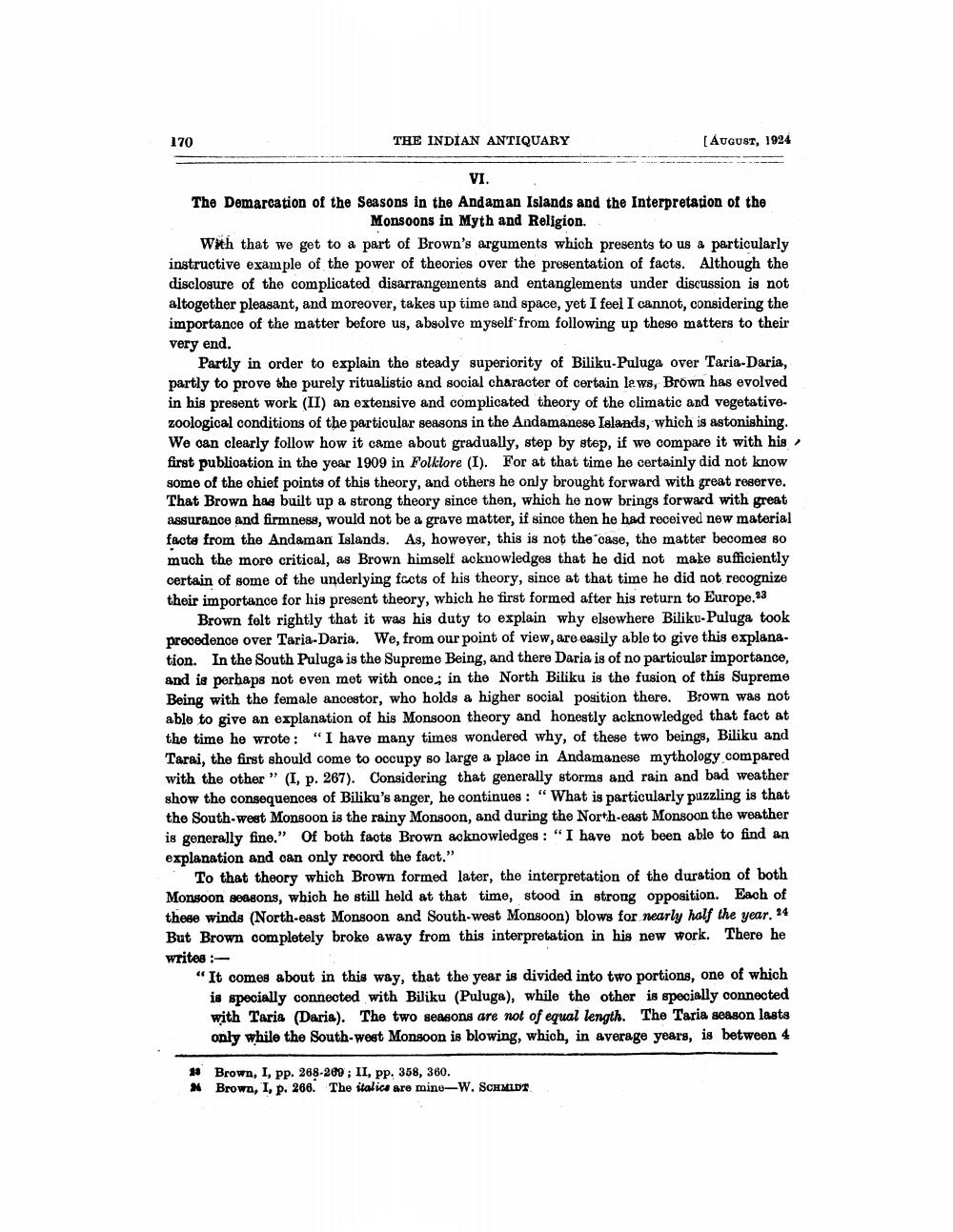________________
170
THE INDIAN ANTIQUARY
[AUGUST, 1924
VI. The Demarcation of the Seasons in the Andaman Islands and the Interpretation of the
Monsoons in Myth and Religion. With that we get to a part of Brown's arguments which presents to us a particularly instructive example of the power of theories over the presentation of facts. Although the disclosure of the complicated disarrangements and entanglements under discussion is not altogether pleasant, and moreover, takes up time and space, yet I feel I cannot, considering the importance of the matter before us, absolve myself from following up these matters to their very end.
Partly in order to explain the steady superiority of Biliku-Puluga over Taria-Daria, partly to prove the purely ritualistio and social character of certain laws, Brown has evolved in his present work (II) an extensive and complicated theory of the climatic and vegetativezoological conditions of the particular seasons in the Andamanese Islands, which is astonishing. We can clearly follow how it came about gradually, step by step, if we compare it with his first publioation in the year 1909 in Folklore (I). For at that time he certainly did not know some of the chief points of this theory, and others he only brought forward with great reserve. That Brown has built up a strong theory since then, which he now brings forward with great assurance and firmness, would not be a grave matter, if since then he had received new material facts from the Andaman Islands. As, however, this is not the case, the matter becomes so much the more critical, as Brown himself acknowledges that he did not make sufficiently certain of some of the underlying facts of his theory, since at that time he did not recognize their importance for his present theory, which he first formed after his return to Europe. 33
Brown felt rightly that it was his duty to explain why elsewhere Biliku-Puluga took precedence over Taria-Daria. We, from our point of view, are easily able to give this explanation. In the South Puluga is the Supreme Being, and there Daria is of no particular importance, and is perhaps not even met with once; in the North Biliku is the fusion of this Supreme Being with the female ancestor, who holds a higher social position there. Brown was not able to give an explanation of his Monsoon theory and honestly acknowledged that fact at the time he wrote: "I have many times wondered why, of these two beings, Biliku and Tarai, the first should come to occupy so large a place in Andamanese mythology compared with the other" (I, p. 267). Considering that generally storms and rain and bad weather show the consequences of Biliku's anger, he continues : "What is particularly puzzling is that the South-west Monsoon is the rainy Monsoon, and during the North-east Monsoon the weather is generally fine." Of both facts Brown acknowledges : "I have not been able to find an explanation and can only record the fact."
To that theory which Brown formed later, the interpretation of the duration of both Monsoon seasons, which he still held at that time, stood in strong opposition. Each of these winds (North-east Monsoon and South-west Monsoon) blows for nearly half the year. 24 But Brown completely broke away from this interpretation in his new work. There he writes :
"It comes about in this way, that the year is divided into two portions, one of which
is specially connected with Biliku (Puluga), while the other is specially connected with Taria (Daria). The two seasons are not of equal length. The Taria season lasts only while the South-west Monsoon is blowing, which, in average years, is between 4
13 X
Brown, I, pp. 268-200 ; II, pp. 358, 360. Brown, I, p. 266. The italice are mine-W. SCHMIDT




